Related Research Articles

Blade Runner is a 1982 science fiction film directed by Ridley Scott from a screenplay by Hampton Fancher and David Peoples. Starring Harrison Ford, Rutger Hauer, Sean Young, and Edward James Olmos, it is an adaptation of Philip K. Dick's 1968 novel Do Androids Dream of Electric Sheep? The film is set in a dystopian future Los Angeles of 2019, in which synthetic humans known as replicants are bio-engineered by the powerful Tyrell Corporation to work on space colonies. When a fugitive group of advanced replicants led by Roy Batty (Hauer) escapes back to Earth, burnt-out cop Rick Deckard (Ford) reluctantly agrees to hunt them down.

Blade Runner 2: The Edge of Human (1995) is a science fiction novel by American writer K. W. Jeter. It is a continuation of both the film Blade Runner and the novel upon which the film was based, Philip K. Dick's Do Androids Dream of Electric Sheep?

Do Androids Dream of Electric Sheep? is a 1968 dystopian science fiction novel by American writer Philip K. Dick. It is set in a post-apocalyptic San Francisco, where Earth's life has been greatly damaged by a nuclear global war, leaving most animal species endangered or extinct. The main plot follows Rick Deckard, a bounty hunter who has to "retire" six escaped Nexus-6 model androids, while a secondary plot follows John Isidore, a man of sub-par IQ who aids the fugitive androids.
A replicant is a fictional bioengineered humanoid featured in the 1982 film Blade Runner and the 2017 sequel Blade Runner 2049 which is physically indistinguishable from an adult human and often possesses superhuman strength and intelligence. A replicant can be detected by means of the fictional Voight-Kampff test in which emotional responses are provoked; a replicant's nonverbal responses differ from those of a human. Failing the test leads to execution, which is euphemistically referred to as "retiring".
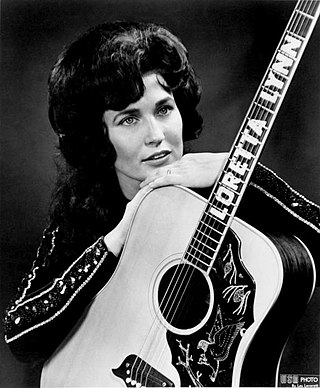
Loretta Lynn was an American country music singer and songwriter. In a career spanning six decades, Lynn released multiple gold albums. She had numerous hits such as "Hey Loretta", "The Pill", "Blue Kentucky Girl", "Love Is the Foundation", "You're Lookin' at Country", "You Ain't Woman Enough", "I'm a Honky Tonk Girl", "Don't Come Home A-Drinkin' ", "One's on the Way", "Fist City", and "Coal Miner's Daughter". The 1980 musical film Coal Miner's Daughter was based on her life.

A pin-up model is a model whose mass-produced pictures and photographs have wide appeal within the popular culture of a society. Pin-up models are usually glamour models, actresses, or fashion models whose pictures are intended for informal and aesthetic display, known for being pinned onto a wall. From the 1940s, pictures of pin-up girls were also known as cheesecake in the U.S.

A pincushion is a small, stuffed cushion, typically 3–5 cm (1.2–2.0 in) across, which is used in sewing to store pins or needles with their heads protruding to take hold of them easily, collect them, and keep them organized.
Deckard may refer to:
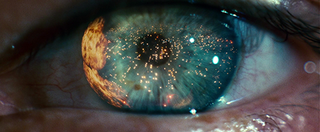
Despite the initial appearance and marketing of an action film, Blade Runner operates on an unusually rich number of dramatic levels. As with much of the cyberpunk genre, it owes a large debt to film noir, containing and exploring such conventions as the femme fatale, a Chandleresque first-person narration in the Theatrical Version, the questionable moral outlook of the hero—extended here to include even the literal humanity of the hero, as well as the usual dark and shadowy cinematography.
Joyce Ballantyne was a painter of pin-up art. She is best known as the designer of the Coppertone girl, whose swimming costume is being pulled down by a dog.
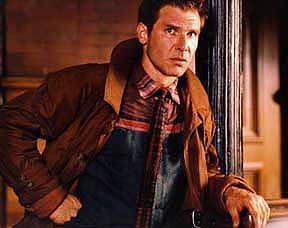
Rick Deckard is a fictional character and the protagonist of Philip K. Dick's 1968 novel Do Androids Dream of Electric Sheep?. Harrison Ford portrayed the character in the 1982 film adaptation, Blade Runner, and reprised his role in the 2017 sequel, Blade Runner 2049. James Purefoy voiced the character in the 2014 BBC Radio 4 adaptation.

Hannah Wilke (born Arlene Hannah Butter; was an American painter, sculptor, photographer, video artist and performance artist. Her work is known for exploring issues of feminism, sexuality and femininity.

Joanna Marion Scanlan is a British actress and writer. On television, she is known for her roles in The Thick of It (2005–2012), Big School (2013–2014), Puppy Love (2014), No Offence (2015–2018), Requiem (2018), and The Larkins (2021). She was nominated for three BAFTA TV Awards for Getting On (2009–2012), including two for Best Writing.
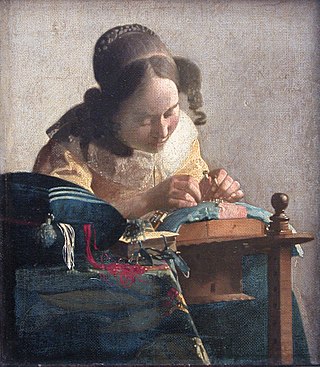
The Lacemaker is a painting by the Dutch artist Johannes Vermeer (1632–1675), completed around 1669–1670 and held in the Louvre, Paris. The work shows a young woman wearing a yellow bodice, holding up a pair of bobbins in her left hand as she carefully places a pin in the pillow on which she is making her bobbin lace.
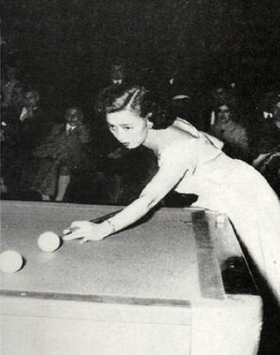
Masako Katsura, nicknamed "Katsy" and sometimes called the "First Lady of Billiards", was a Japanese carom billiards player who was most active in the 1950s. She was the first woman to compete and place among the best in the male-dominated world of professional billiards. First learning the game from her brother-in-law and then under the tutelage of Japanese champion Kinrey Matsuyama, Katsura became Japan's only female professional player. In competition in Japan, she took second place in the country's national three-cushion billiards championship three times. In exhibition she was noted for running 10,000 points at the game of straight rail.

Nina Evans Allender was an American artist, cartoonist, and women's rights activist. She studied art in the United States and Europe with William Merritt Chase and Robert Henri. Allender worked as an organizer, speaker, and campaigner for women's suffrage and was the "official cartoonist" for the National Woman's Party's publications, creating what became known as the "Allender Girl."
Pearl Alice Frush was an American pin-up and glamour illustration artist during the golden era of the calendar art market. Pearl ranked amongst the top three female glamour artists, along with Joyce Ballantyne, and Zoë Mozert. They were a rare "Girl's Club" within the predominantly male pin-up masters of mid-century illustration: Alberto Vargas, George Petty, and Gil Elvgren. According to the co-author of The Great American Pin-Up, Louis K. Meisel, "Frush's technical brilliance was such that, upon close examination, her works even begin to take on a photographic clarity. Those knowledgeable collectors who have studied her paintings have often judged her the equal of Alberto Vargas in artistic excellence." Like Vargas she depicted women in provocative poses, however, she showed them with more proportional bodies than Vargas. She sometimes signed her paintings with her [then] married names "Pearl Frush-Brudon" or "Pearl Mann". One of her most recognizable and enduring contributions to American advertising iconography was her original rendering of Little Debbie® McKee, for McKee Foods in 1960.

Bee and PuppyCat is an American animated television series created and written by Natasha Allegri. The series revolves around Bee, an unemployed woman in her early twenties, who encounters a mysterious creature named PuppyCat. She adopts this apparent cat-dog hybrid, and together they go on a series of temporary jobs to pay off her monthly rent. These bizarre jobs take the duo across strange worlds out in space. The original series was produced by Frederator Studios with the animation initially outsourced to South Korean studio Dong Woo Animation.

Pin Cushion is a 2017 English-language film written and directed by Deborah Haywood, her feature film debut. Pin Cushion premiered as the opening film of International Critics' Week at the 74th Venice International Film Festival and was released in the United Kingdom on 13 July 2018.
References
- ↑ Spigel, Lynn (8 April 2022). TV Snapshots: An Archive of Everyday Life. Duke University Press. p. 50. ISBN 978-1-4780-2289-3 . Retrieved 6 November 2024.